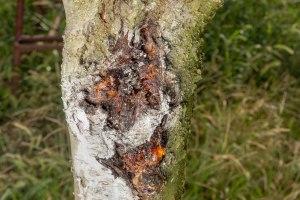
When you look out at your yard, your trees should be a source of beauty, shade, and pride. But what happens when you notice something unusual? Wilting leaves, peeling bark, or branches that look…unhealthy.
For many homeowners in Northern Virginia and Maryland, the biggest question is: Where do I even start? Here’s the thing. Trees are complex living organisms. What looks like a small problem such as spots on leaves, early leaf drop, or dead branches could actually be an early sign of a larger issue with your tree. Acting quickly is key to protecting your investment, your property, and your safety. That’s where professional tree assessments can get you some answers.
What Is a Tree Assessment?
A tree assessment is a full-scope inspection performed by a certified arborist. During this visit, an expert carefully examines your trees to identify issues like:
• Signs of pests and disease
• Soil or root problems
• Structural weaknesses (like cracks or poor branch unions)
• Environmental stressors such as drought, excess moisture, or construction damage
• Safety hazards that could threaten your property
Unlike a quick visual glance, an arborist’s assessment provides a diagnosis and often a treatment plan to keep your trees healthy and your home safe.
Why Homeowners in Northern Virginia & Maryland Need Tree Assessments
Our region’s trees face unique challenges due to changing weather, dense suburban development, and common regional pests. Some of the most frequent tree issues we see
include:
• Spotted Lanternfly infestations and Beef Leaf Disease caused by harmful nematodes
• Oak decline caused by stress and disease• Leaf scorch and dieback from summer droughts
• Root damage from nearby construction and soil compaction
• Storm damage from heavy winds and rain
Without early detection, these problems can spread quickly, making treatments more costly or in some cases leaving tree removal as the only option.
When Should You Schedule a Tree Assessment?
If you notice any of the following tree issues, it’s time to bring in a certified arborist for an inspection:
• Branches dying back from the tips
• Leaves with unusual spots, holes, or discoloration
• Early leaf drop in summer or fall
• Mushrooms or fungi growing near the base
• Cracks or cavities in the trunk
• Insects boring into bark
• A tree leaning more than usual

Even if you don’t see obvious tree issues, annual or seasonal tree assessments are recommended. Preventive care often saves homeowners thousands of dollars by catching issues before they become emergencies.
Contact RTEC Treecare online or call (571) 506-6140 to arrange a consultation. Let the professionals provide thoughtful trimming that protects your property, promotes health, and enhances your landscape for years to come.


